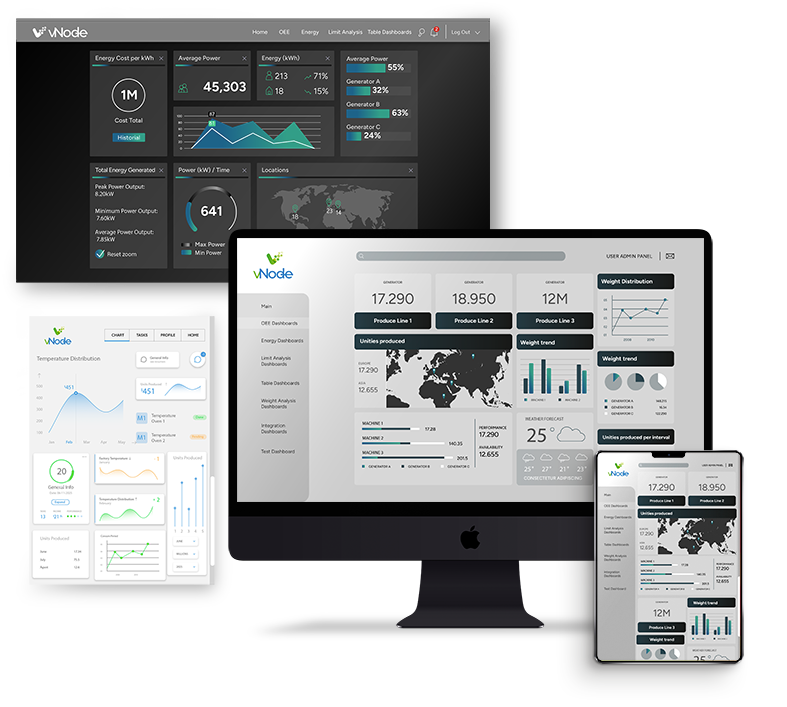Are you considering implementing a cloud-based MQTT broker to optimise communication in your industrial processes? The MQTT protocol has become one of the most efficient solutions for connecting industrial IoT devices, and using a cloud MQTT broker makes management simpler, more secure, and highly scalable. In this practical guide, you’ll learn step by step how to correctly implement a cloud MQTT broker and make the most of this technology.
What is a Cloud-Based MQTT Broker?
A cloud MQTT broker acts as an intermediary that receives, manages, and distributes messages between IoT devices using the MQTT protocol. Hosting it in the cloud ensures continuous connectivity, flexibility, and scalability, allowing thousands of industrial devices to connect efficiently and securely. Additionally, a cloud-based MQTT broker can handle multiple simultaneous connections, making it a robust solution for large-scale industrial environments.
Why Choose a Cloud MQTT Broker?
- Immediate scalability: Easily increase the number of connected devices without complex infrastructure adjustments.
- High availability: Ensure uninterrupted communication between devices, even during high demand.
- Lower operational costs: Reduce expenses on infrastructure, maintenance, and updates, as these are handled by the cloud provider.
- Enhanced security: Offers advanced features such as encryption, authentication, and authorisation to protect critical data.
For more information on protocol differences, refer to the article on MQTT vs Modbus.

Step-by-Step Guide to Implementing a Cloud MQTT Broker
Step 1: Define Your Technical Requirements
Before beginning implementation, clearly determine:
- The number of devices you’ll be connecting.
- Expected message frequency and volume.
- Specific security requirements (such as multi-factor authentication).
- Types of data and how they’ll be used within your platform.
Step 2: Choose the Right Cloud Provider
Select a cloud platform that offers:
- High availability and proven performance in industrial applications.
- Full compatibility with the MQTT protocol and other related protocols.
- Advanced security options and regulatory compliance.
- Strong technical support and comprehensive documentation resources.
A great option is to explore specialised solutions such as the vNode MQTT Client Module.
Step 3: Initial MQTT Broker Configuration
Once you’ve selected a provider, carry out the initial setup:
- Create a specific instance of the cloud MQTT service.
- Clearly define the endpoint for your IoT devices to connect to.
- Set up secure credentials and detailed access policies for users and devices.
- Configure specific parameters such as Quality of Service (QoS) and message retention.
Step 4: Connecting IoT Devices to the Broker
Carefully configure each IoT device with:
- The endpoint provided by the cloud broker.
- Unique and secure credentials for each device.
- Specific topics for publishing and subscribing.
- QoS settings appropriate to the criticality of the data being transmitted.
Step 5: Continuous Monitoring and Optimisation
Maintain optimal performance of your MQTT broker through best practices:
- Constant traffic monitoring and performance analysis using specialist tools.
- Set up automatic alerts to quickly detect failures or abnormal conditions.
- Ongoing adjustments in line with the growth of your device network and data flows.
- Regular software updates and security patches provided by the cloud vendor.
Common Mistakes When Implementing a Cloud MQTT Broker
- Failing to plan for scalability: Always anticipate future growth to avoid turning your MQTT solution into an operational bottleneck.
- Neglecting security: Define clear and robust protocols from the outset to avoid unnecessary risks when handling critical data.
- Overlooking interoperability: Ensure compatibility with other existing industrial systems for smooth and efficient integration.
- Underestimating the importance of technical support: Choose providers that offer solid and specialised support to reduce response times to technical issues.
How to Make the Most of Your Cloud MQTT Broker
To maximise benefits and gain real competitive value:
- Integrate your cloud MQTT broker with existing industrial systems such as SCADA or ERP.
- Use advanced tools for real-time visualisation, monitoring, and analytics.
- Conduct regular security and performance audits to maintain operational quality and safety.
- Leverage the generated data to enhance strategic and operational decision-making.
To learn more about MQTT technology and explore more practical industrial applications, visit the official vNode website.
Ready to Improve Industrial Communication?
Implementing a cloud MQTT broker not only boosts operational efficiency and reduces costs, but also provides long-term flexibility, scalability, and security for your industry. You now have all the steps needed to successfully begin this transformative journey.
Ready to revolutionise your industrial communication with a cloud-based MQTT broker? Get started today and take your company’s connectivity to the next level.
